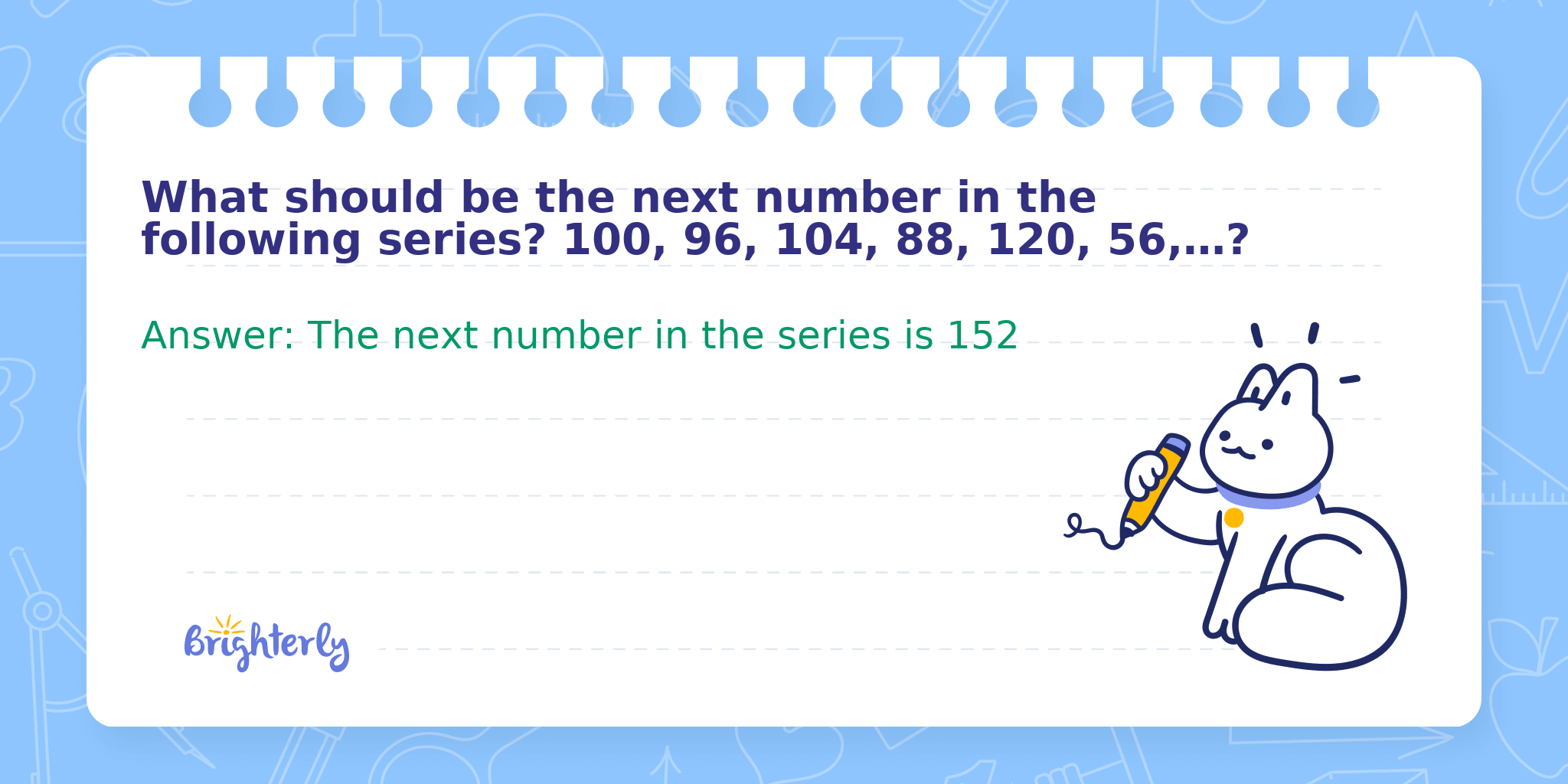
Reviewed by Laila A. Lico
What should be the next number in the following series? 100, 96, 104, 88, 120, 56,…?
Answer: The next number in the series is 152
This problem asks for the next number in a pattern-based sequence: 100, 96, 104, 88, 120, 56, ... Sequence questions often rely on identifying an underlying pattern between the terms, which could involve alternating rules, arithmetic operations, or geometric changes. Let's analyze the sequence to determine the rule and predict the next number.
Methods
Math Tutor Explanation Using Pattern Detection
To find the next number in the sequence, first observe the changes between each term. This often involves analyzing differences or ratios between consecutive numbers, and checking for alternating patterns.
Step 1: Step 1: Calculate the differences between consecutive terms: 100→96 (-4), 96→104 (+8), 104→88 (-16), 88→120 (+32), 120→56 (-64)
Step 2: Step 2: Notice that the differences alternate between subtraction and addition, with the value doubled each time but with opposite signs: -4, +8, -16, +32, -64
Math Tutor Explanation Using Formula Observation
Seek a rule or generating function governing the nth term by observing a pattern in the transformation of the sequence.
Step 1: Step 1: List the adjustment at each step and check if it's related to multiplication, division, or a recursive function
Step 2: Step 2: Recognize the sequence follows the recurrence: Next term = Previous term + (-1) × (Difference × 2), doubling the previous adjustment and alternating sign
Step 1:
Step 2:
Math Tutor suggests: Discover More Number Patterns and Sequences
If you enjoyed solving number series, explore these related exercises to challenge your skills with mathematical patterns and sequences.
FAQ on Number Series Patterns
How do I identify patterns in a number sequence?
Look for consistent changes—differences, ratios, or combinations—between terms, and watch for repeating or alternating behavior.
What are common types of sequence patterns?
Common patterns include arithmetic (add/subtract), geometric (multiply/divide), alternating, and recursive relations.
What should I do if a pattern is not immediately clear?
Try checking every other term, alternating differences, or write down the operations between numbers to reveal hidden rules.
Can number series include more than one rule?
Yes. Some complex sequences mix rules, such as alternating addition and multiplication, or variable difference patterns.
What if there’s more than one plausible pattern?
Choose the pattern that is simplest and fits all known terms; if unclear, check the problem’s context or instructions for clues.


